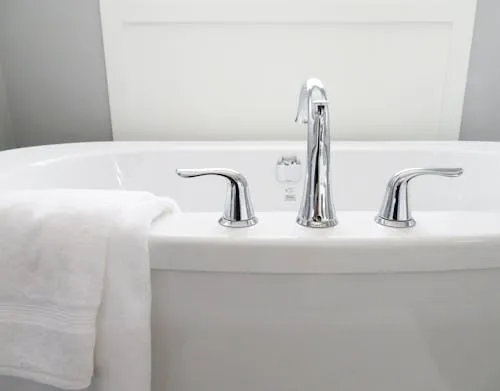TOC
What are client cards in a spa?
Client cards in a spa are fundamental tools that allow managers and staff to better understand their clients. But what information do they contain, and why are they so important? Let’s break it down.
Definition and Purpose
Client cards are documents or records where relevant information about each client visiting the spa is collected. This includes data such as:
| Information | Description |
|————————-|——————————————–|
| Name | Client’s full name |
| Contact | Phone number and email address |
| Service history | Treatments and services used |
| Preferences | Personal tastes and preferences |
| Additional notes | Observations about the client’s experience |
The purpose of these cards is twofold: on one hand, they allow for the personalization of the client’s experience, and on the other, they facilitate tracking their history. This is crucial for providing exceptional service that fosters loyalty.
Benefits of having client cards
Having well-organized client cards can offer several benefits:
1. Service personalization: Knowing each client’s preferences allows for tailoring treatments to their specific needs. For example, if a client prefers a specific type of massage, the staff can ensure it is offered on their next visit.
2. Improved communication: Having access to contact information makes it easier to send appointment reminders, promotions, or news. This keeps clients informed and engaged.
3. Trend analysis: The cards allow for identifying patterns in client behavior. For example, if many clients opt for a specific treatment in summer, the spa can adjust its offerings to maximize demand.
4. Loyalty: By offering more personalized and attentive service, clients will feel valued and more likely to return.
Implementing client cards in your spa
To implement an effective client card system, consider the following steps:
– Digitization: Use specialized software to facilitate the creation and management of cards. This not only saves time but also improves information accessibility.
– Staff training: Ensure all staff are trained to use the cards effectively. This includes knowing how to update information and how to use it to enhance the client experience.
– Regular review: Establish a system for regularly reviewing and updating the cards. This ensures that the information is always accurate and relevant.
Remember that client cards are more than just documents; they are a powerful tool for building lasting relationships. At the end of the day, a satisfied client is a loyal client, and that’s what all spa managers desire. If you want to delve deeper into the importance of client management, you can explore more on the topic in specialized resources.
The Importance of Client Cards in Spa Business Management
Client cards are an invaluable tool in managing a spa. It’s not just about collecting information but about building a solid and personalized relationship with each client. Let’s explore why these cards are essential for your business’s success.
1. Service Personalization
One of the main advantages of having client cards is the ability to offer a personalized service. With detailed information about each client’s preferences and needs, you can:
– Tailor treatments: Know what type of massages or treatments they prefer.
– Offer promotions: Send special offers that align with their interests.
For example, if a client has indicated they like aromatherapy, you can suggest treatments that include this technique, making them feel valued and understood.
2. Improvement in Loyalty
Client loyalty is crucial in the spa sector. Client cards allow for tracking visit frequency and treatments performed. This will help you:
| Benefit | Description |
|———————————–|————————————————————–|
| Personalized reminders | Send appointment reminders or special promotions. |
| Loyalty programs | Create programs that reward frequent clients. |
A client who feels their experience is unique and tailored to their needs is more likely to return. Additionally, a personalized approach can foster word of mouth, resulting in new clients.
3. Data Analysis for Decision Making
Client cards are not only useful for customer service but also provide valuable data for business management. By analyzing this information, you can identify trends and patterns that will help you:
– Optimize service offerings: Know which treatments are most popular.
– Adjust prices: Base them on demand and customer satisfaction.
For example, if you notice a specific treatment has a high satisfaction rate, you might consider expanding it or creating related packages.
4. Strengthening Communication
Good communication is key in any relationship, and this is no different in the spa realm. Client cards facilitate tracking previous interactions, allowing for smoother and more effective communication. You can:
– Send personalized emails: Inform about new treatments or schedule changes.
– Collect feedback: Learn how the client’s experience was and what can be improved.
In this sense, client cards become a fundamental resource for building a lasting and trusting relationship.
5. Compliance with Regulations
Last but not least, it’s essential to remember that client cards also help comply with various health and wellness sector regulations. Keeping a detailed record of clients’ treatments and preferences not only enhances the client experience but also ensures your spa operates within legal boundaries.
In summary, client cards are much more than a simple document; they are the foundation upon which an exceptional spa experience is built. If you want to delve into how to implement an effective client management system, consider exploring more about the importance of customer management in the service sector. This will not only benefit your clients but also boost your business’s growth and sustainability.
How to Create Effective Spa Client Cards
Creating effective client cards is essential for any spa looking to offer personalized and quality service. But how can we ensure these cards are truly useful? Below, I share some practical tips and strategies to help you optimize this process.
1. Basic and Contact Information
The first thing you should include in the client card is basic information. This will not only facilitate communication but also allow you to better know your clients. Make sure to collect the following information:
| Field | Description |
|———————-|———————————–|
| Name | Client’s full name |
| Email | To send promotions and reminders |
| Phone | For appointment confirmations |
| Date of birth | To offer personalized promotions |
Remember that keeping this information updated is key to maintaining a good relationship with your clients.
2. Preferences and Habits
An essential aspect of client cards is knowing their preferences and habits. Ask your clients about their favorite treatments, if they have allergies, or if they prefer certain products. This information will allow you to personalize their spa experience. Here are some questions you might include:
– What is your favorite treatment?
– Do you have any allergies or sensitivities to specific products?
– Do you prefer aromatherapy during your treatment?
3. Visit Log and Feedback
Logging your clients’ visits and their comments is an excellent way to improve service. You can include a section in the card where you note:
– Date of the last visit
– Treatments performed
– Client comments about their experience
This will not only help you offer a more personalized service but also allow you to identify trends and areas for improvement.
4. Use of Technology
Today, there are many digital tools that can facilitate the creation and management of client cards. Consider implementing management software that allows you to store all this information securely and accessibly. Additionally, some platforms allow for automatic appointment reminders, which can improve client attendance.
5. Maintain Privacy
It is crucial that when collecting personal information, privacy regulations are respected. Ensure that your clients are informed about how their data will be used and offer them the option to update their information at any time. Trust is key in the relationship with your clients.
In summary, creating effective client cards in a spa not only involves collecting data but also understanding and anticipating each client’s needs. By doing so, you can offer exceptional service that will not only make them return but also turn them into ambassadors for your brand. For more information on how to manage client relationships, you can consult resources on customer relationship management and its importance in the service sector.
Remember, every detail counts! So don’t skimp on efforts to make your client cards a reflection of the care and attention you offer in your spa.
Benefits of Keeping Spa Client Cards Updated
Keeping client cards updated in a spa is not just a matter of organization; it is a key strategy for providing exceptional service and maximizing client satisfaction. Have you ever wondered how a simple card can transform your clients’ experience? Here are some of the most notable benefits.
1. Service Personalization
When client cards are up to date, you can offer a personalized service that truly resonates with each client’s needs and preferences. This not only enhances the experience but also fosters loyalty. For example, if a client prefers certain treatments or products, having this information on hand allows you to anticipate their desires.
2. Improved Communication
Effective communication is fundamental in any business. By having updated cards, you can send personalized offers and appointment reminders that align with your clients’ interests. This not only improves retention rates but can also increase word-of-mouth recommendations.
3. Trend Analysis
By collecting data from your clients, you can identify patterns and trends that will help you make informed decisions about the services you offer. For example, if you notice a group of clients is interested in specific treatments, you can adjust your offerings to meet that demand. This is where the importance of client cards in a spa comes into play.
4. Increased Operational Efficiency
Updated cards allow your team to work more efficiently. By having access to relevant information, such as treatment history and preferences, therapists can better prepare for each session, resulting in a smoother and more effective service.
5. Client Loyalty
Loyalty is the heart of any successful business. When clients feel their needs are being met and they are offered exceptional service, they are more likely to return. Keeping their cards updated is a way to show that you value their time and preference. Additionally, a satisfied client is one who recommends, which can attract new visitors to your spa.
Comparison Table: Updated vs. Outdated Cards
| Aspect | Updated Cards | Outdated Cards |
|---|---|---|
| Personalization | High – Services tailored to each client | Low – Generic services |
| Communication | Effective – Relevant offers and reminders | Ineffective – Irrelevant messages |
| Trend Analysis | Positive – Informed decisions | Negative – No concrete data |
| Operational Efficiency | High – Proper team preparation | Low – Disorganization and confusion |
| Loyalty | High – Satisfied and loyal clients | Low – Unsatisfied clients |
In conclusion, keeping client cards updated in your spa is not just a recommended practice but a necessity to ensure quality service. At the end of the day, a happy client is the best advertising you can have. So, are you ready to take your clients’ experience to the next level? Remember, every detail counts, and client cards are the first step toward service excellence.
Examples of Well-Designed Spa Client Cards
Client cards are a fundamental tool for any spa looking to offer exceptional and personalized service. In this regard, having an attractive and functional design can make a difference. Below, we will explore some inspiring examples and practical tips for creating cards that not only inform but also captivate your clients.
1. Attractive Visual Design
A well-designed client card should be visually appealing. Use a color palette that reflects your spa’s identity and ensure the typography is readable. Here’s an example of how a card might be structured:
| Element | Description |
|---|---|
| Client’s Name | Space for the client’s full name. |
| Date of Birth | Information that helps personalize experiences. |
| Preferred Treatments | List of services the client enjoys most. |
| Special Notes | Observations about allergies or preferences. |
2. Relevant and Useful Information
In addition to being visually appealing, the cards should contain relevant information. For example, including data about treatment history and client preferences can help your team offer a more personalized service. Consider adding sections like:
- Visit History: Record of dates and treatments performed.
- Client Comments: Space for the client to share their experience.
- Recommendations: Suggestions for future treatments based on history.
3. Integration with Technology
Today, technology plays a crucial role in managing client cards. Using spa management software can facilitate data collection and storage. This not only improves efficiency but also allows for deeper analysis of client preferences. To learn more about the importance of data management in the wellness sector, you can consult articles on data management.
4. Inspiring Examples
Let’s look at some examples of client cards that have been well received in the sector:
- Interactive Card: Some spas have opted for digital cards that clients can fill out on their first visit, allowing them to update their information easily.
- Personalized Cards: Creating cards that include a client’s photo and a personalized welcome message can make them feel valued.
- Rewards Section: Including an area where accumulated points or rewards are recorded can incentivize client loyalty.
Remember that a well-designed client card is not just an informative document but also a tool that can help build a lasting relationship with your clients. To delve deeper into how cards can enhance the client experience in your spa, you can explore more about the concept of customer experience.
In conclusion, investing time and resources in the design of client cards can be a key strategy for improving satisfaction and loyalty in your spa. Don’t underestimate the power of a good presentation!

Common Mistakes in Managing Spa Client Cards
Managing client cards in a spa may seem like a simple task, but there are many details that can lead to common mistakes. These mistakes not only affect the client experience but can also negatively impact business operations. Below, we will explore some of these mistakes and how to avoid them.
1. Lack of Information Updates
One of the most frequent mistakes is not keeping client information updated. Imagine a client arrives at your spa, and upon reviewing their card, you realize their phone number or email address is outdated. This can lead to poor communication and ultimately to losing clients.
| Information | Consequence of Not Updating |
|---|---|
| Phone Number | Inability to confirm appointments |
| Lack of promotions and news | |
| Treatment Preferences | Unsatisfactory client experience |
2. Not Recording Client Preferences
Another common mistake is not recording client preferences. Each client is unique and has their own needs. If you don’t note what treatments they prefer or if they have any allergies, you can ruin their experience. Remember that knowing your client is fundamental to offering a personalized and memorable service.
3. Ignoring Post-Service Follow-Up
After a client receives a treatment, it is crucial to follow up. Not doing so can give the impression that you don’t care about their opinion. A simple thank you message or a brief survey can work wonders to strengthen the client relationship. Additionally, you can use this information to improve your services.
4. Not Adequately Training Staff
Managing client cards does not only fall on the software you use but also on the people who handle it. Ensure your team is well-trained in using the tool and the importance of maintaining accurate information. Continuous training is key to avoiding mistakes that can cost time and money.
5. Not Using Adequate Technology
Technology can be your best ally in managing client cards. If you are still using spreadsheets or outdated systems, it’s time to consider an upgrade. There are many tools on the market that can help you manage information more efficiently and securely. A well-implemented system not only improves organization but also facilitates access to the information needed to provide excellent service.
Conclusion
Avoiding these common mistakes when managing client cards in your spa will not only improve the client experience but also optimize your operations. Remember that attention to detail is fundamental in the wellness industry. At the end of the day, a satisfied client is a returning client. So, let’s get to work and take care of those details!
If you want to delve deeper into the importance of client management in the beauty and wellness sector, you can find more information on customer management and its impact on business.
Digital Tools for Managing Spa Client Cards
Efficient management of client cards is crucial for the success of any spa. In an environment where personalization and attention to detail are essential, having the right digital tools can make all the difference. Below, we will explore some of the best options available to facilitate this task.
1. Customer Management Software
Customer management programs are fundamental for keeping all information organized. These tools allow storing personal data, treatment preferences, and even visit history. Some of the most notable features include:
– Intuitive interface: Facilitates navigation and quick access to information.
– Integration with calendars: Allows for efficient appointment scheduling.
– Automatic reminders: Helps reduce client no-shows.
| Feature | Advantage |
|———————–|———————————-|
| Intuitive interface | Saves time in searching |
| CRM integration | Improves internal communication |
| Analytical reports | Allows for informed decision-making|
2. Mobile Applications
In the digital age, having a mobile application can be a great ally. These applications allow clients to access their cards quickly and easily. Some advantages include:
– Access at any time: Clients can review their data from their phone.
– Ease of scheduling appointments: Users can schedule treatments with just a few clicks.
– Personalized notifications: Keeps clients informed about promotions and news.
3. Customer Relationship Management (CRM) Systems
A CRM is a powerful tool that goes beyond simple card management. It allows for more effective management of client relationships. Some of its functionalities are:
– Client segmentation: Allows for creating groups based on preferences or history.
– Marketing automation: Facilitates sending personalized emails and promotions.
– Data analysis: Provides valuable insights into client behavior.
Using a CRM can transform the way a spa interacts with its clients, improving satisfaction and loyalty.
4. Data Security and Privacy
It is essential that any digital tool used complies with data protection regulations. Ensure that the chosen platform offers:
– Data encryption: Protects sensitive client information.
– Restricted access: Only authorized personnel should have access to the cards.
– Backups: Ensures information is not lost in case of technical failures.
Remember that client trust is vital, and proper management of their data is essential to maintain it.
Conclusion
Investing in digital tools to manage client cards in your spa not only optimizes management but also enhances the client experience. With the right technology, you can offer a more personalized and efficient service, which in turn can increase client loyalty and satisfaction. If you want to delve deeper into the importance of client cards in the beauty and wellness sector, there are many resources available that can help you better understand this crucial aspect of your business.
Integrating Spa Client Cards with Reservation Systems
The integration of client cards in a spa with reservation systems is a crucial step to optimize the client experience and improve operational efficiency. But what does this really mean? Let’s break it down.
Why is integration important?
When we talk about integrating client cards with reservation systems, we mean unifying client information into a single platform. This not only facilitates access to relevant data but also allows for a more personalized service. Imagine being able to see a client’s treatment history, preferences, and even birthdays, all in one click. That’s power!
| Benefits of Integration | Impact on the Client |
|---|---|
| Quick access to information | Improves customer service |
| Service personalization | Increases client satisfaction |
| Efficient appointment management | Reduces wait times |
How to Implement Integration
Implementing this integration may seem challenging, but here are some steps you can follow:
1. Select an appropriate reservation system: Ensure the software you choose has the capability to integrate client cards. Research options that offer this functionality.
2. Centralize information: Create a system where all relevant client information is available to staff. This includes contact data, treatment history, and preferences.
3. Train your team: Ensure your staff is well-trained in using the system. This will not only allow them to use it effectively but also improve the client experience.
4. Request feedback: Once implemented, ask for your clients’ opinions. This will help you adjust the system and continuously improve.
Success Story
A spa in Barcelona implemented this integration and, in just three months, noticed a 30% increase in client satisfaction. Clients appreciated the personalized attention and quick appointment management. This demonstrates that a good client card is not just a document but a powerful tool for your business’s success.
Conclusion
The integration of client cards in a spa with reservation systems is more than a trend; it is a necessity in today’s world. With a focus on personalization and efficiency, you can transform your clients’ experience while optimizing your operations. Remember, a happy client is a loyal client. Don’t underestimate the power of good data management! Additionally, by offering a more personalized service, you will not only improve client satisfaction but also foster loyalty and positive word of mouth. So, are you ready to take the next step? Your spa deserves it!
How to Use Spa Client Cards to Enhance the Client Experience
Client cards are an invaluable tool for any spa looking to offer an exceptional experience. But how can you make the most of this information? Here are some effective strategies.
1. Service Personalization
One of the main advantages of having client cards is the ability to personalize services. Each client is unique, and knowing their preferences can make all the difference.
| Client Preferences | Recommended Services |
|---|---|
| Relaxing massages | Swedish massage or aromatherapy |
| Facial treatments | Hydrating or anti-aging facial |
| Use of specific products | Treatments with organic products |
By having access to each client’s information, you can offer them personalized recommendations that align with their interests and needs. This not only enhances their experience but also fosters loyalty.
2. Tracking Client Satisfaction
Use the cards to track client satisfaction after each visit. You can include a section where you record their comments and suggestions. This will not only help you identify areas for improvement but also make your clients feel valued.
Did you know that a satisfied client is more likely to return? Additionally, you can implement brief surveys that allow clients to share their experience. This can be a great step toward continuous improvement.
3. Creating Loyalty Programs
Loyalty programs are an excellent way to incentivize clients to return. By using the information from client cards, you can create personalized promotions that suit their preferences. For example, if a client often opts for facial treatments, you could offer them a discount on their next facial.
Remember that loyalty is not just about discounts but about creating an emotional connection with your clients.
4. Staff Training
It is essential that your team is trained to use client cards effectively. Ensure they understand the importance of this tool and how it can help them offer a more personalized service. You can conduct workshops or training sessions where practical cases are discussed and experiences shared.
Knowledge is power, and in the spa world, knowing your clients can be the key to their satisfaction.
5. Constant Innovation
Finally, don’t forget that the wellness industry is constantly evolving. Stay up to date with trends and adjust your services according to your clients’ preferences. Client cards can help you identify patterns and anticipate changes in their needs.
For more information on how client cards can impact your business, you can consult resources on customer relationship management or marketing strategies in the wellness sector.
Remember, the client experience is not just about offering a service but about creating memorable moments that clients want to repeat. With client cards, you have the opportunity to transform each visit into a unique and personalized experience. Take advantage of this tool and take your spa to the next level!
Spa Client Cards: A Resource for Personalized Marketing
Client cards are an invaluable tool for spa managers looking to offer exceptional and personalized service. In a sector where the client experience is key, having detailed information about each client can make the difference between an average service and a memorable one.
What Information to Include in Client Cards?
When creating client cards, it is essential to collect data that allows you to understand their preferences and needs. Here we present a table with the essential elements you should consider:
| Element | Description |
|---|---|
| Full Name | To personalize communication. |
| Contact Information | Phone and email for promotions and reminders. |
| Service History | Record of treatments performed and preferences. |
| Personal Notes | Details like birthdays, music preferences, or allergies. |
Benefits of Using Client Cards
Implementing a client card system not only improves the client experience but also offers multiple benefits for your spa. Here are some:
- Personalized Marketing: By knowing your clients’ preferences, you can send specific promotions that truly interest them.
- Loyalty: Personalized service generates loyalty. Clients feel valued and are more likely to return.
- Continuous Improvement: Analyzing the collected information will allow you to adjust your services and offers to better meet your clients’ needs.
How to Implement a Client Card System
If you’re ready to take the step and start using client cards in your spa, here are some practical tips:
- Choose a Platform: Decide whether you will use a digital or physical system. Digital options are usually more efficient and easier to update.
- Train Your Team: Ensure all employees understand the importance of the cards and how to use them.
- Request Information: When welcoming a new client, ask them to complete a brief form with the necessary information.
Remember that personalization is the key to success in the wellness sector. By implementing a client card system, you will not only enhance the client experience but also create more effective marketing campaigns. This will not only attract new clients but also foster loyalty among existing ones. If you want to delve into how personalization can transform your business, you can learn more about personalization in marketing.
In conclusion, client cards are a powerful resource for any spa looking to stand out in a competitive market. Do not underestimate the impact that well-informed customer service can have on your business. Start today to build stronger and more meaningful relationships with your clients!
If you want to learn more about the importance of customer service, I invite you to explore the concept of customer service and how it can influence client satisfaction and loyalty.

Conclusions on Managing Spa Client Cards
Managing client cards in a spa is a crucial aspect that can make the difference between an average business and an exceptional one. Below, we will explore some key conclusions that every spa manager should consider.
The Importance of Personalization
In a world where the client experience is fundamental, personalization becomes a differentiating element. By having detailed cards for each client, you can offer treatments and services that align with their preferences and needs. This not only improves client satisfaction but also fosters loyalty.
| Benefits of Personalization | Impact on Business |
|---|---|
| Increased Satisfaction | Happier clients more likely to return |
| Improved Retention | Lower cancellation rates |
| Increased Sales | Personalized offers that generate more revenue |
Technology as an Ally
Using specialized software for managing client cards can be a game-changer. Digital tools allow for securely and accessibly storing information, facilitating constant data updates. This not only saves time but also minimizes errors. Additionally, system integration can offer valuable insights into client behavior, guiding future marketing strategies.
Some functionalities you should consider include:
– Automatic appointment reminders.
– History of previous treatments.
– Product and service preferences.
Communication is Key
Good management of client cards also involves maintaining smooth communication. This can be through emails, text messages, or even phone calls. Keeping your clients informed about promotions, new treatments, or service changes is essential. Additionally, you can use their card information to personalize these messages, making them feel valued.
Remember that feedback is fundamental. Ask your clients about their experience and use that information to improve. Post-treatment surveys are an excellent way to gain valuable insights.
Final Conclusion
In summary, effective management of client cards in a spa is not just an administrative task but an integral strategy that can boost your business. By focusing on personalization, leveraging technology, and maintaining open communication, you will not only enhance the client experience but also foster a lasting and profitable relationship.
To delve deeper into the importance of client data management, you can explore more on the topic in resources related to customer management and its impact on client satisfaction. Your spa deserves to be at the forefront!





